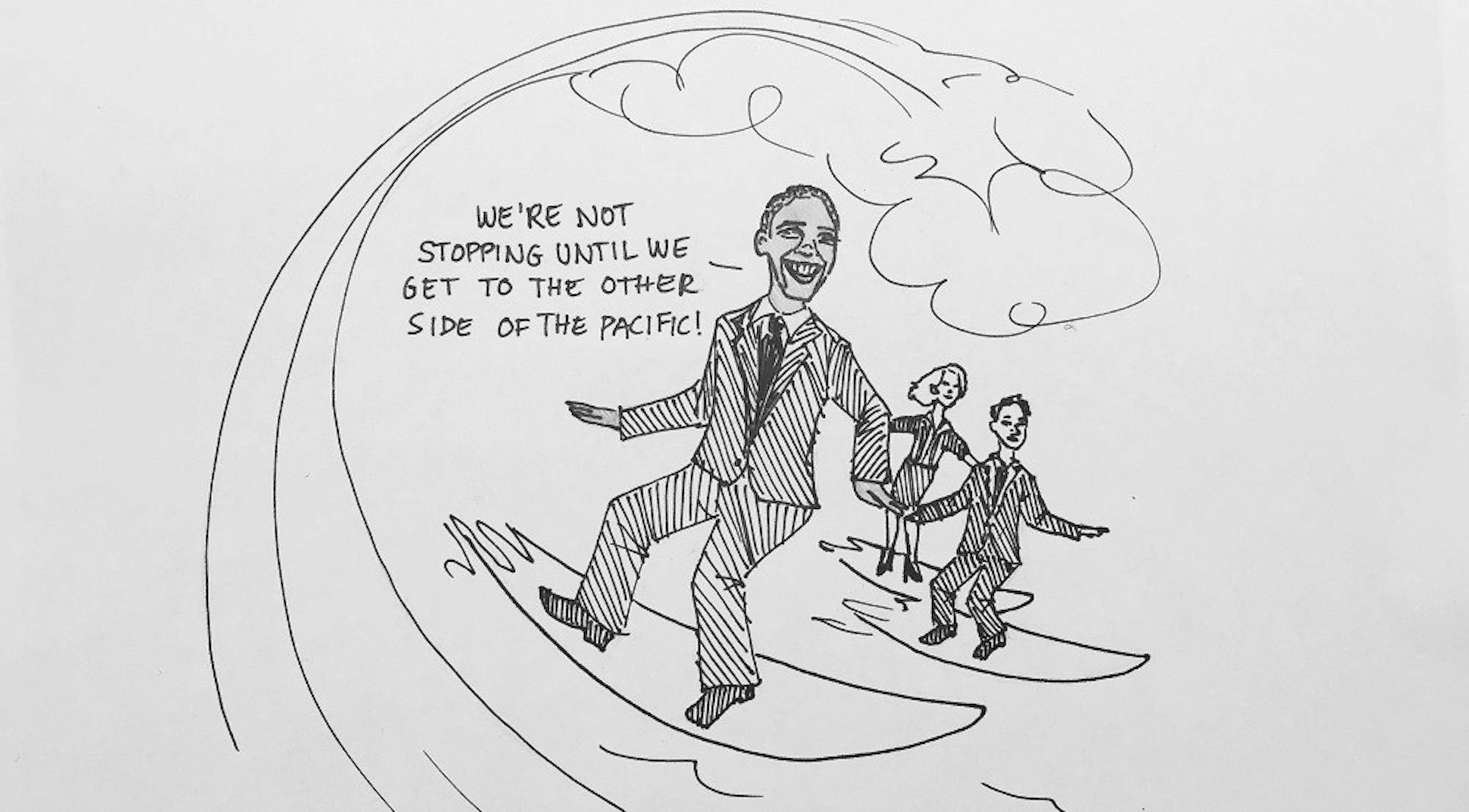
Illustration by Priyanka Pai
In the State of the Union address last week, President Obama proudly declared, “tonight, we turn the page.” While a series of crises, both domestic and foreign, have defined Obama’s presidency thus far, the speech marked a return to normalcy. Obama proudly declared that the United States is turning the page away from these crises, away from the damage control policies of his first six years in office, towards a new age of American global leadership and prestige in a style appropriate to lead the United States and the world prosperously and peacefully through the 21st century.
The United States is ready to move on from damage control mode, to exercising global leadership in a manner appropriate for the 21st century, namely by pivoting its focus from Europe and the Middle East to the Asia-Pacific Region — a vast area of lands, oceans and cultures that spans from the Western coast of the United States and the rest of the Western hemisphere, to China and Northeast Asia, to Australia and Oceania, to Southeast Asia, to the Indian subcontinent.
Obama elaborated on what turning American foreign policy toward the Asia-Pacific Region would mean in the State of the Union: “In the Asia Pacific, we are modernizing alliances while making sure that other nations play by the rules in how they trade, how they resolve maritime disputes, how they participate in meeting common international challenges like nonproliferation and disaster relief.”
Obama wants to establish a series of rules and dispute resolution mechanisms in the Asia-Pacific like the United States has with its partners in the Western hemisphere and Europe. The United States has a wide range of bilateral agreements and is a member of many multilateral institutions that have promoted peace and prosperity in these regions, including the North Atlantic Treaty Organization (NATO), the North American Free Trade Agreement (NAFTA) and the Organization of American States (OAS). All of these organizations and alliances have provided forums for dispute resolution and collective action, which benefit all members.
Obama’s visit to India this week exemplifies his emphasis on the Asia-Pacific. He is the first ever president to visit India twice while in office, demonstrating the importance he places on the country, a regional giant.
Obama could also sign the Trans-Pacific Partnership (TPP), a massive multilateral free trade agreement with countries all across the Pacific rim, pending congressional approval to fast track the treaty. It has been in talks for many years, but now looks closer than ever to being finalized. The TPP, while very controversial for domestic reasons, would further integrate the Asia-Pacific region economically.
The State of the Union is not the first time that the Obama administration made such declarations about reorienting towards the Asia-Pacific. In 2011, then-Secretary of State Hillary Clinton published an article titled “America’s Pacific Century” in the magazine Foreign Policy. In it she detailed how the United States should “pivot” to the Asia-Pacific region because it contains almost half of the world’s population, key economic centers, and important allies. The United States should work on establishing free trade agreements in the region, such as the TPP; engage multilateral political institutions, such as the Association of South East Asian Nations (ASEAN); improve military ties with our allies in the region; and build stronger bilateral relationships with the states of the region.
Unfortunately, Clinton did not have the opportunity to see her vision come to fruition. Domestic issues and new crises in Europe and the Middle East captivated the Obama administration’s time and political capital — ranging from the debt ceiling, the government shutdown, the rise of ISIS, to leaving it unable to pivot to the Asia-Pacific. Until now.
As Obama proudly noted in the State of the Union: “We have risen from recession freer to write our own future than any other nation on Earth.”
The American economy is back in full swing, growing a booming five percent in the third quarter with unemployment at 5.8 percent, its lowest since 2008. All the other great powers are far worse off than the United States. For example, Europe continues to struggle economically; China is embroiled in conflict with its neighbors about maritime claims and will soon have to endure the political and social consequences of decreasing economic growth for the first time in a generation; Russia is internationally isolated due to its aggression and its economy is imploding due to falling oil prices, sanctions and lack of investor confidence.
With this resumed ability to craft a visionary foreign policy for the United States’ future, rather than previous foreign policy of reaction, Obama is in a prime position to reorient the United States to the fledgling Asia-Pacific, and situate the United States with a foreign policy for the 21st century.
Ben Perlmutter is a College junior from Chappaqua, New York.





